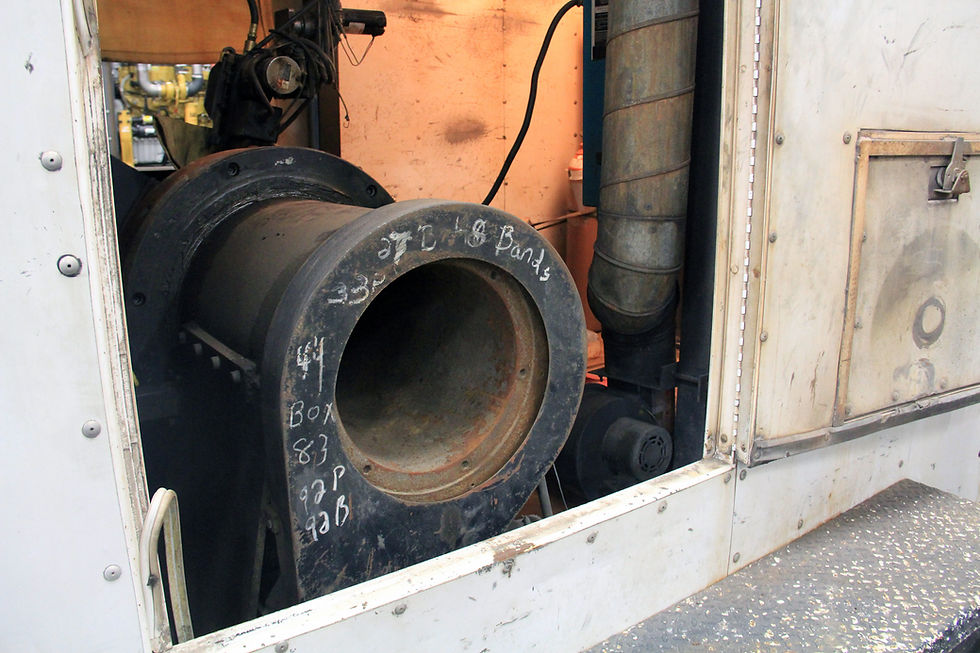Debris Contraception
- Market Coordinator

- Jun 18, 2018
- 3 min read
Updated: Jul 23, 2018
As I've mentioned before, I've been working on an updated Summit Sales & Equipment catalog for a while now (it's almost done, I swear, I'm mostly just waiting on things, and you know how that goes).
One part that sort of caught my attention early on is something called a diaphragm protector (page 11, unless something huge changes later than it should). And, if I'm being completely honest, it's probably because of this classic scene from Seinfeld. Consider Elaine Benes' friend a diaphragm protector, I suppose.
But in the context of oil and gas and not, you know, other things, I have no idea what one is, even as I've already started this blog post. So let's learn together. Or I'll learn something you already know and this will still help our Google results. Either way's okay with me.
Usually in these situations, I like to use Schlumberger's Oilfield Glossary to get things started, it's a fantastic resource but, uhh, that's not going to do much good here.
Luckily there's more than one site on the internet and, as it turns out, a gauge manufacturer is where I want to go with this request. The diaphragm protectors appear right before the gauges in the catalog and honestly, I never put that one together.
...if any debris in the hydraulic line interacts with the gauge, it can affect the way the gauge functions, causing inaccurate readings. Using a diaphragm protector will help to maintain accurate pressure readings and help to ensure many years of service for a hydraulic pressure gauge.
Drilling mud frequently can include unwanted extras like cement, acid or regular-style mud, and those things are pretty bad for gauges, and they also affect the pressure reading. So that pretty much covers the "why," but what about the "how?"
The way a diaphragm protector works is that the diaphragm seal is also filled with the same fluid as the system. When pressure is applied on the hose, it forces pressure through the lower housing against the rubber diaphragm which then forces pressure to the upper housing. With the use of a high pressure hose, this pressure is then transmitted to the gauge where the force can be measured.
There's a lot going on there, so let's break that down a little and illustrate things with some photos. First, here's a diaphragm protector. I literally took this picture just outside of our warehouse five minutes ago, so I can verify that we do have all of the relevant parts in stock here. Just saying.

Here they are in their natural habitat, on top of a fluid end.

Sure, I could've used some newly-refurbished, freshly-painted beast to illustrate, but then I wouldn't have been able to point out (cross-promotion alert) that this frac pump truck is actually for sale, along with some other great used equipment we have, so be sure to check it out if you're in the market.
Just to complete the picture, that black line going off of the top of that photo goes to this pressure gauge. And hey, there's our logo, we do those too, by the way.

Anyway, as you might imagine, fluid from the pump enters through the bottom of the diaphragm protector, through a retainer nut. It's essentially looking at this, or it would be if mud had eyes and it wasn't pitch black in there.

So what's the retainer nut retaining? Good question. Because as it turns out, it's the actual diaphragm part of the diaphragm protector. Here's a better look at it, along with the nut and the check valve you may have noticed on the outside that ensures the process is a one-way street. Don't worry Toni in the warehouse, I put everything back when I was done.

Here's the plot twist, and where it sort of all comes together: the portion of the diaphragm protector cylinder above where the diaphragm sits and forms a seal is filled with the same fluid as is being pumped. Okay, maybe that's not a phenomenal plot twist since it pretty much said exactly that in the quote above, but maybe you forgot, fingers crossed on that one.
Regardless, the "natural" mud enters through the bottom, where the diaphragm stops unwanted debris, not entirely unlike Elaine's diaphragm. However, the pressure formed there is transmitted through to the upper-level "clean" mud, and then out through a hose on the opposite side from where it entered the protector, to the pressure gauge for a reading. Pretty cool.
Diaphragm protectors are actually just one type within a larger category of pressure sensors that also includes piston separators (as the name implies, the pressure is transmitted by a piston in that case), as well as pressure deboosters, which reduce pressure for reading by a 4:1 ratio, because that's a lot safer in some cases and the math isn't that hard.
Hope you learned something today, as I certainly did! But even if not, hope you consider us when you finally get sick of buying new gauges all the time.





Comments